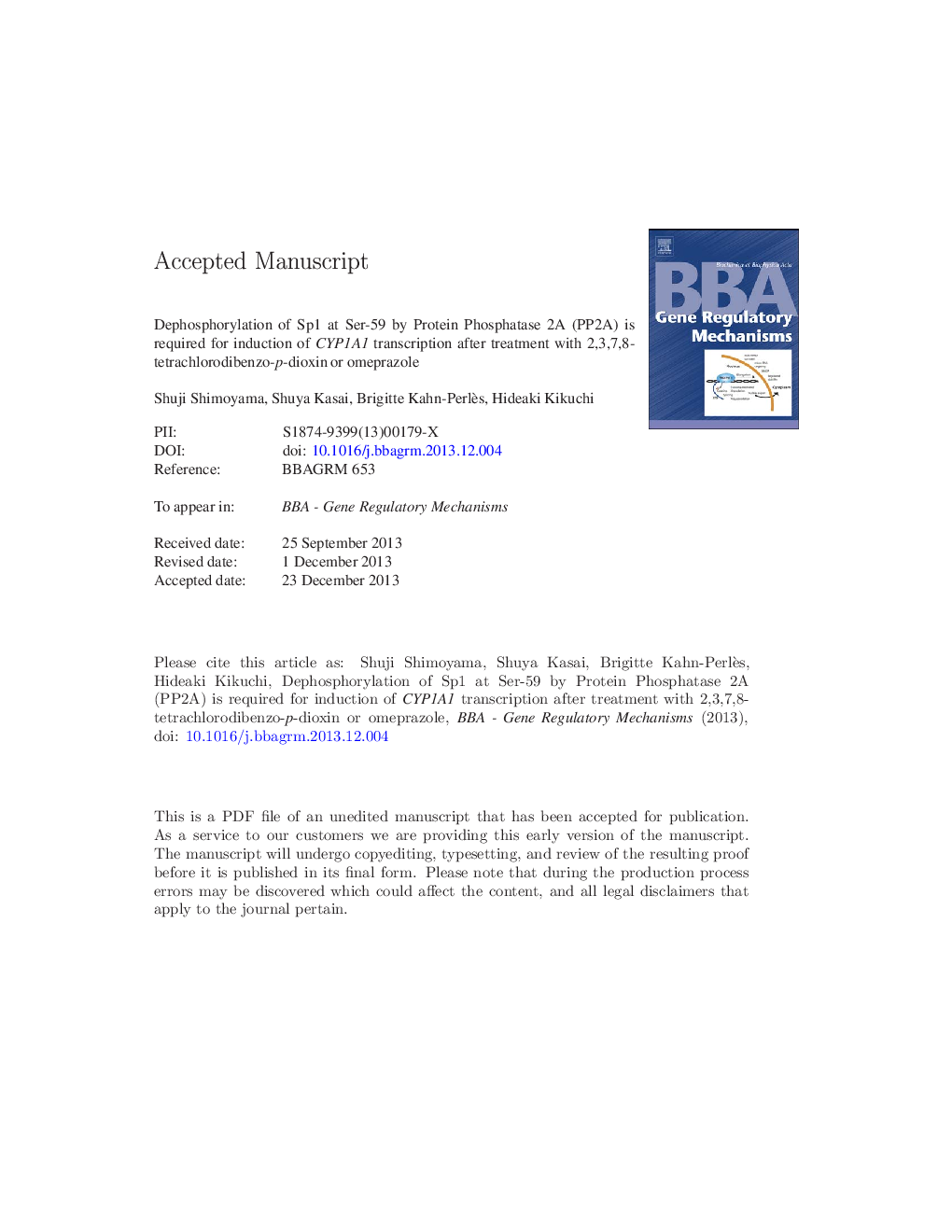| Article ID | Journal | Published Year | Pages | File Type |
|---|---|---|---|---|
| 10799206 | Biochimica et Biophysica Acta (BBA) - Gene Regulatory Mechanisms | 2014 | 32 Pages |
Abstract
The aryl hydrocarbon receptor (AhR) is a transcription factor that is activated by either 2,3,7,8-tetrachlorodibenzo-p-dioxin (TCDD) or omeprazole (OP). Activated AhR can induce CYP1A1 transcription by binding to the xenobiotic responsive element (XRE). However, the mechanism of activation of the CYP1A1 promoter region is poorly understood. Previous reports showed that Sp1 could bind to a GC-rich region near the CYP1A1 promoter. This study sought to clarify the function of Sp1 in CYP1A1 transcription. Phosphorylation of Sp1 at Ser-59 (pSer-59) was previously reported to be closely related to transcriptional regulation. We used a site-specific phospho-antibody to show that treatment with TCDD or OP drastically reduced the level of pSer-59 in Sp1 from HepG2 cells. This reduction was too much, we hypothesized that the reduced phosphorylation level resulted from activation of phosphatase activity. Given that pSer-59 is dephosphorylated by PP2A, we examined the effect of a PP2A inhibitor, okadaic acid (OA), on pSer-59 and transcription of CYP1A1. The results showed that OA blocked dephosphorylation of Ser-59 and drastically inhibited transcription of CYP1A1. Similar results were obtained after knockdown of PP2A. Treatment with OA had no effect on the expression of AhR, its nuclear translocation, or its ability to bind to the XRE. Furthermore, dephosphorylation of Sp1 at Ser-59 was not affected by knockdown of AhR. These results indicate that the signals from TCDD or OP caused PP2A-mediated dephosphorylation of Sp1 at Ser-59 and induced CYP1A1 transcription. This signaling pathway was independent of the AhR-mediated pathway.
Keywords
Related Topics
Life Sciences
Biochemistry, Genetics and Molecular Biology
Biochemistry
Authors
Shuji Shimoyama, Shuya Kasai, Brigitte Kahn-Perlès, Hideaki Kikuchi,
